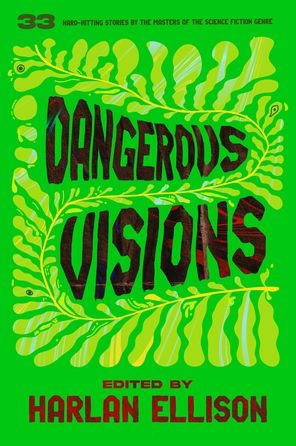Harlan Ellison (1934–2018) wrote and edited more than 120 books and more than 1,700 stories, essays, and articles, as well as dozens of screenplays and teleplays. He won the Hugo Award nine times, the Nebula Award four times, the Bram Stoker Award six times (including the Lifetime Achievement Award in 1996), the Edgar Allan Poe Award of the Mystery Writers of America twice, the Georges Méliès Fantasy Film Award twice, and was awarded the Silver Pen for Journalism by PEN, the international writer’s union. He was named a Grand Master by the Science Fiction and Fantasy Writers of America in 2006.
J.G. Ballard (1930-2009) was an English writer of short stories and novels. Several of his best-known works were adapted into successful movies, including Crash, and Empire of the Sun. A continual recipient of critical acclaim, the Times included him in their 2008 list of The 50 Greatest British Writers.
Larry Niven is the multiple Hugo, Locus, and Nebula Award–winning author of science fiction short stories and novels, including the Ringworld series, as well as many other science fiction masterpieces. His Footfall, coauthored with Jerry Pournelle, was a New York Times bestseller.
Frederik
Pohl (1919–2013) won the National Book Award in 1980 for his novel Jem. From about 1959 until 1969, he edited Galaxy magazine and its sister magazine, If, winning the Hugo Award for it three years in a row. His writing also won him four Hugos and multiple Nebula Awards. He became a Nebula
Grand Master in 1993. In 2010 he won the Hugo Award for Best Fan Writer, based on the writing on his blog, “The Way the Future Blogs.”
Isaac Asimov (1920–1992) was born in the Soviet Union and came to the United States in 1923. He earned his PhD in chemistry in 1948, and in 1958 became a full-time writer. His writings include the Foundation Trilogy; I, Robot; Tomorrow’s Children; and numerous works of nonfiction touching on a range of scientific topics. Among his accolades are six Hugo awards, a SFWA Grand Master Award, and high praise from such luminaries as Kurt Vonnegut, Arthur C. Clarke, and Gene Roddenberry.
Samuel R. Delany, winner of multiple Nebula and Hugo awards, is an acclaimed writer of speculative fiction. In 2002, he was inducted by the Science Fiction and Fantasy Hall of Fame. In 2010, he was awarded the third J. Lloyd Eaton Lifetime Achievement Award in Science Fiction from the academic Eaton Science Fiction Conference. The Science Fiction Writers of America named him its thirtieth Grand Master in 2013. For his lifetime contribution to lesbian and gay literature, he was awarded the Bill Whitehead Award.
Poul Anderson (1926–2001) was one of the most prolific and popular writers in science fiction. He won the Hugo Award seven times and the Nebula Award three times, as well as many other awards, including the Grand Master Award of the Science Fiction Writers of America for a lifetime of distinguished achievement. With a degree in physics and a wide knowledge of other fields of science, he was noted for building stories on a solid foundation of real science, as well as for being one of the most skilled creators of fast-paced adventure stories. He was author of over one hundred novels and story collections, several hundred short stories, and several mysteries and nonfiction books.
Robert Silverberg’s first published story appeared in 1954 when he was a sophomore at Columbia University. Since then, he has won the prestigious Nebula Award five times and the Hugo Award five times. He has been nominated for both awards more times than any other writer. In 1999 he was inducted into the Science Fiction Hall of Fame, and in 2004 the Science Fiction and Fantasy Writers of America gave him their Grand Master Award for career achievement. He remains one of the most imaginative and versatile writers in science fiction.
Roger Zelazny (1937-1995)
was an American author of science fiction and fantasy novels, as well as many short stories. Known for including both mythological characters of different origins as well as elements from real history, Zelazny is perhaps best known for The Chronicles of Amber series. He was awarded the Nebula award three times and the Hugo award six times.
Philip K. Dick (1928–1982) published thirty-six science fiction novels and 121 short stories in which he explored the essence of what makes man human and the dangers of centralized power. Toward the end of his life, his work turned toward deeply personal, metaphysical questions concerning the nature of God. Eleven novels and short stories have been adapted to film, notably Blade Runner (based on Do Androids Dream of Electric Sheep?), Total Recall, Minority Report, and A Scanner Darkly. The recipient of critical acclaim and numerous awards throughout his career, Dick was inducted into the Science Fiction Hall of Fame in 2005, and in 2007 the Library of America published a selection of his novels in three volumes. His work has been translated into more than twenty-five languages.



